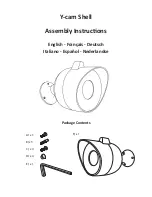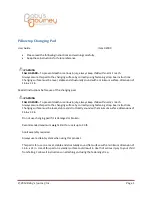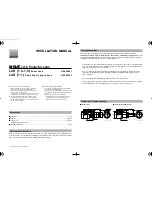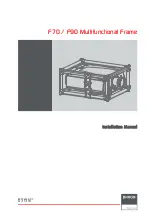
Rheonics | Switzerland | U.S.A.
SRV, SRD, SRV-FPC, SRD-FPC Installation and Intrinsic Safety Manual
P. 11
Version 2.0, Updated: October 29, 2020
Rheonics GmbH, Klosterstrasse 19, 8406 Winterthur, Switzerland
©Rheonics. Rheonics confidential and proprietary information.
3.2.4.
Pressure rating of the sensors
The SR sensors are provided in two variants that have different pressure ratings. All variants
except for the “FPC” or fixed process connection SRV and SRD sensors are rated for a maximum
hydrostatic pressure of the process fluid of 700 bar (10,000 PSI) in order to retain IP54 ingress
protection as relevant for the sensor’s intrinsic safety. The SRV/SRD “FPC” sensors have a
maximum fluid pressure rating of 70 bar (1,000 PSI).
These pressure ratings pertain only to maintenance of intrinsic safety of the sensors. Please
consult the configuration data sheet delivered with the particular sensor for pressure limits for
maintenance of accuracy and operational safety.
3.2.5.
Damage protection
Rheonics SRV/SRD sensors are provided with an impact shield to protect the back end of the
sensor from mechanical damage that could compromise IP54 ingress protection. The impact
shield must be installed whenever the surrounding equipment permits it. If there is insufficient
space to install the impact shield, the sensor must be protected from mechanical impact (as
from falling objects) by the surrounding equipment. In all cases, it is the responsibility of the
installer to ensure that the sensor cannot be impacted by falling objects or other sources of
mechanical impact. The shield is installed by sliding the end of the shield over the back end of
the sensor, up to at least the weld line on the sensor body. It must extend far enough toward
the back so that it completely covers the M12 connector that connects the sensor cable to the
sensor. The worm-drive screw is then tightened so that the shield securely grips the back end of
the sensor housing.
Rheonics SRV/SRD sensors are also provided with a protective sleeve that shields the immersed
end of the sensor from impact by large objects in the fluid flowing over it that could damage the
sensor and lead to fluid penetration. Although the sensor is very robust, the sleeve must be
installed whenever there are solid objects in the fluid larger than 8mm in their smallest
dimension. The protective sleeve is attached by sliding it over the neck of the sensor as far as it
will go, and then tightening the set screws around its periphery.
The following Figures 4 and 5 show the correct method for installing both the impact shield and
the protective sleeve:












































